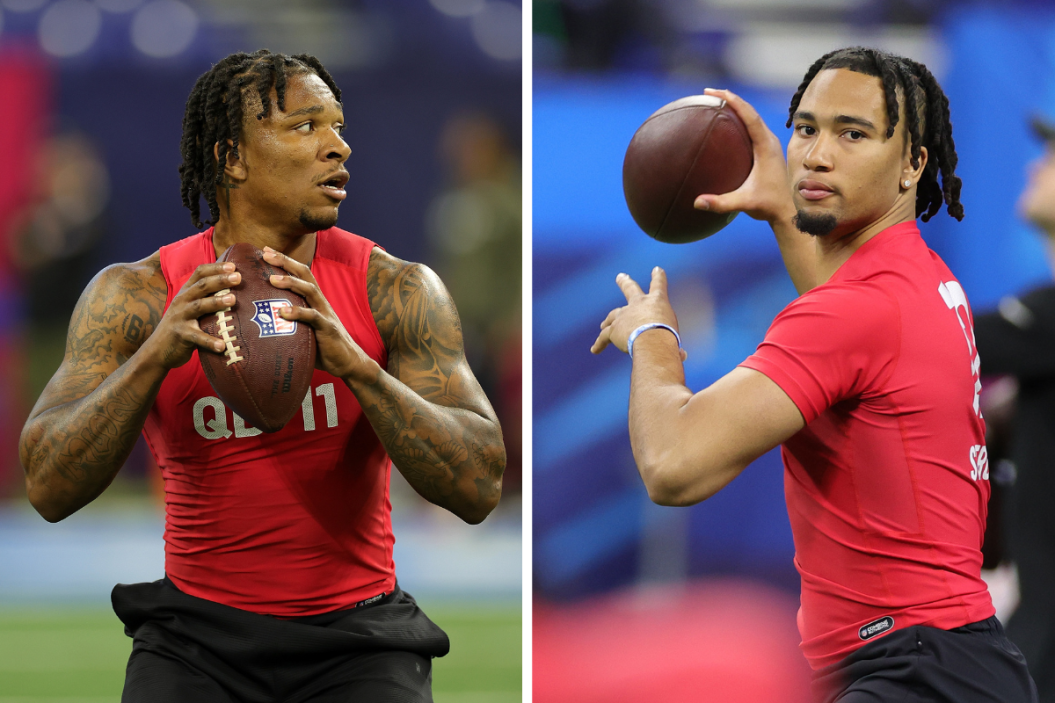For years, the NFL Combine has come to Indianapolis, Indiana, to showcase the talents of some of the best NFL prospects in the upcoming draft, as well as some prospects hoping to walk away with a better draft grade than when they arrived. And this year was no different.
Videos by FanBuzz
However, players nowadays opt out of certain parts of the combine, as their draft stock is in a spot where they think the combine could only hurt them. That being said, some prospects come into the NFL Combine with a point to prove — and that they do.
This year, four quarterbacks came into the NFL Combine with the idea that they're the top quarterback prospects in the upcoming NFL Draft. Those quarterbacks are Bryce Young from Alabama, C.J. Stroud from Ohio State, Anthony Richardson from Florida and Will Levis from Kentucky.
Going into the combine, these were the guys rumored to be the top quarterbacks, all likely being drafted in the first round. However, now that their combine performance has concluded, which prospects helped their draft stock and which prospects hurt their draft stock?
Bryce Young, Alabama
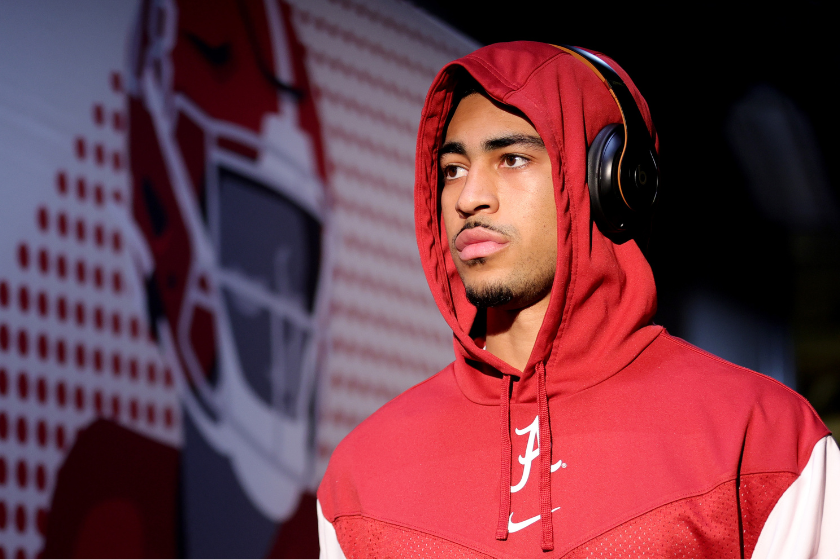
Photo by Carmen Mandato/Getty Images
Honestly, I'm going to say Bryce Young neither helped nor hurt his draft stock at the NFL Combine.
While he gained points for being 204 pounds (and 5-foot-10, plus change), it can't help him that he didn't participate in a single thing besides interviews and being measured. Sure, he is touted as the QB likely to be taken first, but C.J. Stroud has also been touted up there, and he performed in just about everything.
Why was Young unwilling to perform in the throwing drills or the solo drills? Did Young gain weight unhealthily, thus being in a position where he wouldn't perform well? These are just hypotheticals, but they're important to think about. And while he did incredibly well in the interviews, having a smart brain attached to an inept body doesn't matter in the NFL. That's not calling him inept per se, but his size coming into the NFL deserves attention.
Young will probably be fine in the NFL, but I'd argue his draft stock didn't rise because of the NFL Combine. It may not have dropped in the eyes of those who matter — NFL general managers — but if I were a GM, his choice to opt out of everything is notable to me.
C.J. Stroud, Ohio State
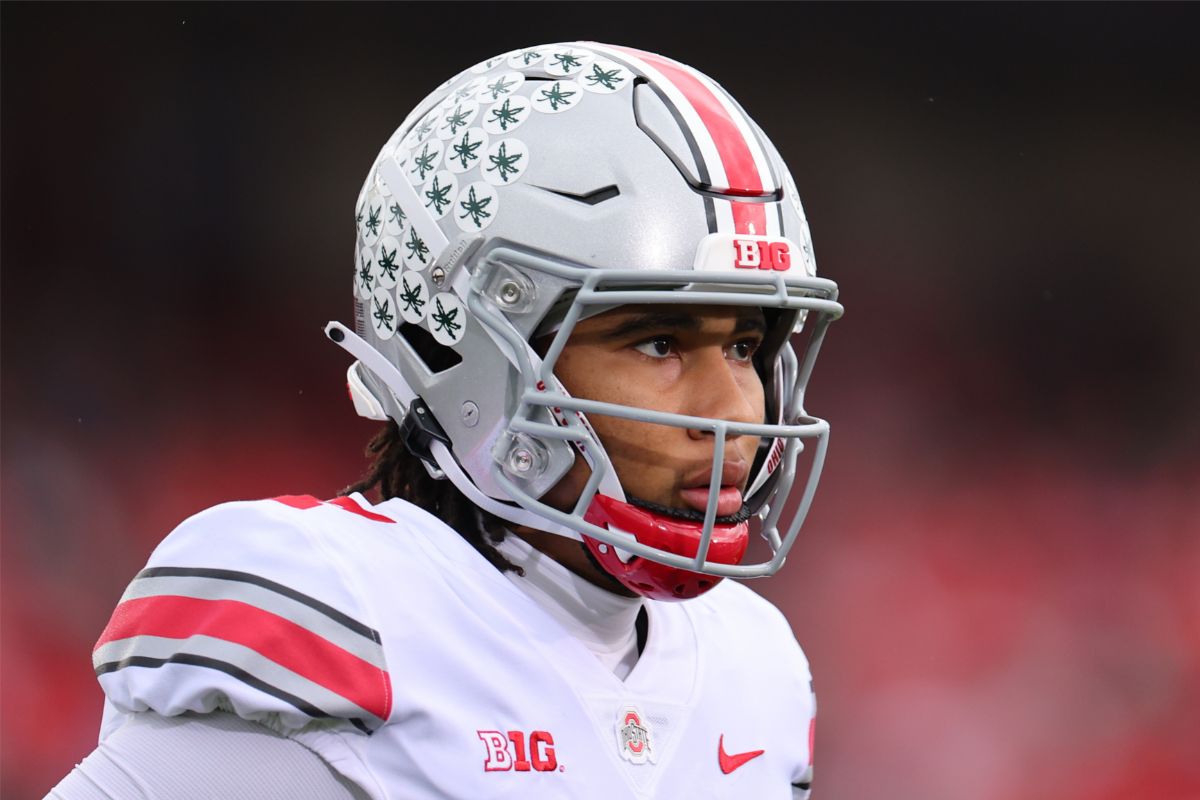
Photo by Michael Reaves/Getty Images
Without much doubt, C.J. Stroud had the best combine for someone who doesn't have the label of "project". But for those choosing at the top of the draft — or a team that's trying to obtain draft capital that will allow them to be at the top of the draft — Stroud made as good of a pitch as you can for being worthy of the No. 1 pick.
Obviously, draft stock shouldn't be solely based on the combine. Nor should it be solely based on their Pro Day. In fact, it shouldn't be based solely on any one thing or even a few things. It should encapsulate the entire prospect and everything they've done up to this point. That said, if every other box was checked besides the combine, Stroud has a strong chance to be taken first.
"CJ Stroud is having one of the best throwing sessions I’ve seen at the Combine." - @MoveTheSticks @CJ7STROUD | @OhioStateFB
📺: #NFLCombine on @nflnetwork
📱: Stream on NFL+ pic.twitter.com/SFkqZyKj8j— NFL (@NFL) March 4, 2023
His combine might not've helped him the most out of first-round prospects, but there's no doubt that his stock went up because of this performance.
However, it goes to show that even if you're a good prospect, performing well at the NFL Combine can absolutely help your draft stock. And that's exactly what happened to Stroud's stock.
Anthony Richardson, Florida
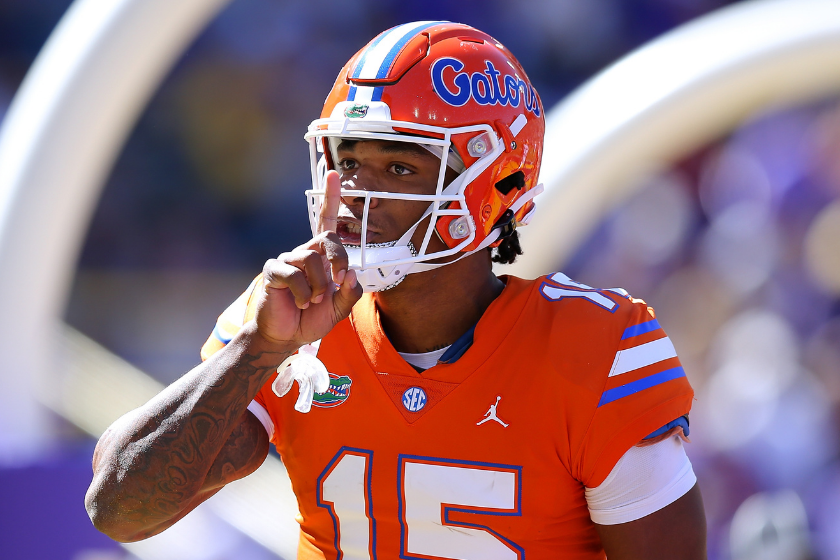
Photo by Jonathan Bachman/Getty Images)
Well, well, well. Anthony Richardson was known to be an athletic prospect, but Richardson might've just made himself a lot of money because of this performance.
The Florida signal-caller has been referred to as a project quarterback, as he isn't as refined as Young or Stroud. However, Richardson's combine was a historic one as far as quarterbacks are concerned.
Here's how Richardson's combine scores rank against QBs in all of NFL Combine history:
- Broad jump: 10 feet, 9 inches (1st)
- Vertical jump: 40.5 inches (1st)
- Ball velocity: 60 mph (1st)
- 40-yard dash: 4.43 seconds (4th)
Again, it's important to note that a prospect's combine isn't the only thing teams look at.
Richardson likely shouldn't be taken before Young or Stroud; but for a team that has time to build around Richardson, he could blossom into one of the league's best. He could also be a workout hero and never solidify as an NFL quarterback. So much of a player's success in the league relies on the "uncontrollable" parts — things such as their coaching staff, weapons, protection, scheme, etc.
If Richardson is put into a perfect spot, he's going to be an incredibly good quarterback in the future. However, the more things that don't go right, the more Richardson's chances of being great go down. That said, there's one thing everyone can agree on: Richardson's NFL Combine performance did nothing but help his draft stock.
In fact, he helped his draft stock the most of these quarterbacks.
Plenty of GMs saw his combine and now think they can get the most out of the Florida quarterback. Whether they actually do is another question for a different time.
Will Levis, Kentucky
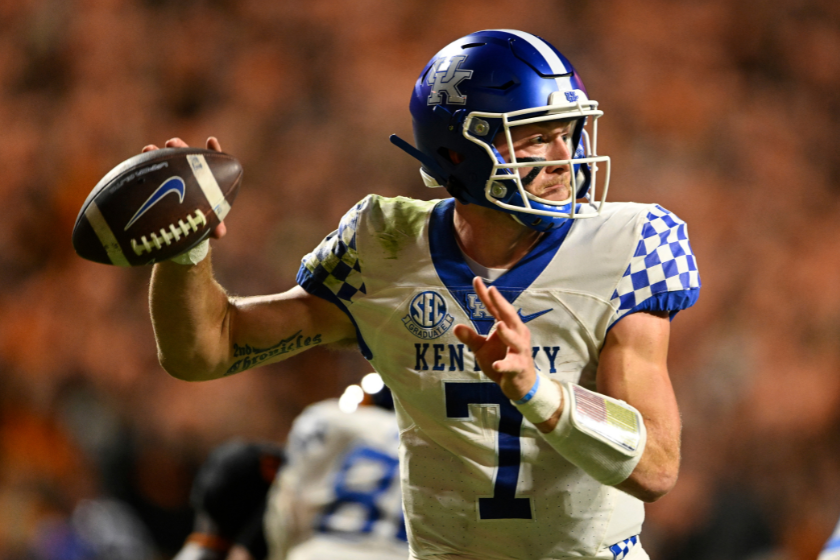
Photo by Eakin Howard/Getty Images
As someone who doesn't think Will Levis is anything to write home about, I have to note that he wasn't very involved in the NFL Combine.
The only solo drills he did were the vertical jump and broad jump, and then he joined the other quarterbacks in throwing drills. Choosing to do only two jumping drills seemed odd to me, but at least he participated in the throwing drills. His best moments were throwing the deep ball, as expected, but nothing he did wowed me.
He's touted as one of the top quarterback prospects, but it just isn't there in my eyes. He throws the ball hard and far. That's what became most apparent to me during Levis' NFL Combine. In all honesty, it didn't seem as though Levis helped or hurt his draft stock. It seemed to have been just a good enough performance to not hurt him. What he did was what people thought he'd do in shorts. Nothing was shocking at either end of the spectrum.
Whether that's what NFL GMs saw or not is another question. That question, as well as many others, will be answered for all quarterbacks come April 27 in Kansas City at the 2023 NFL Draft.
